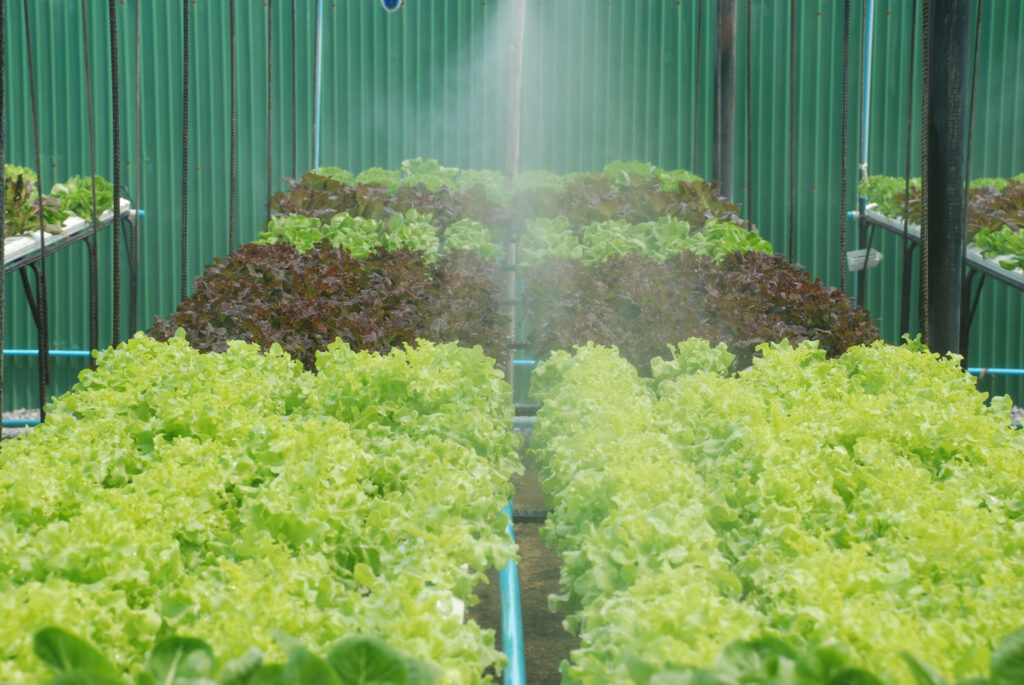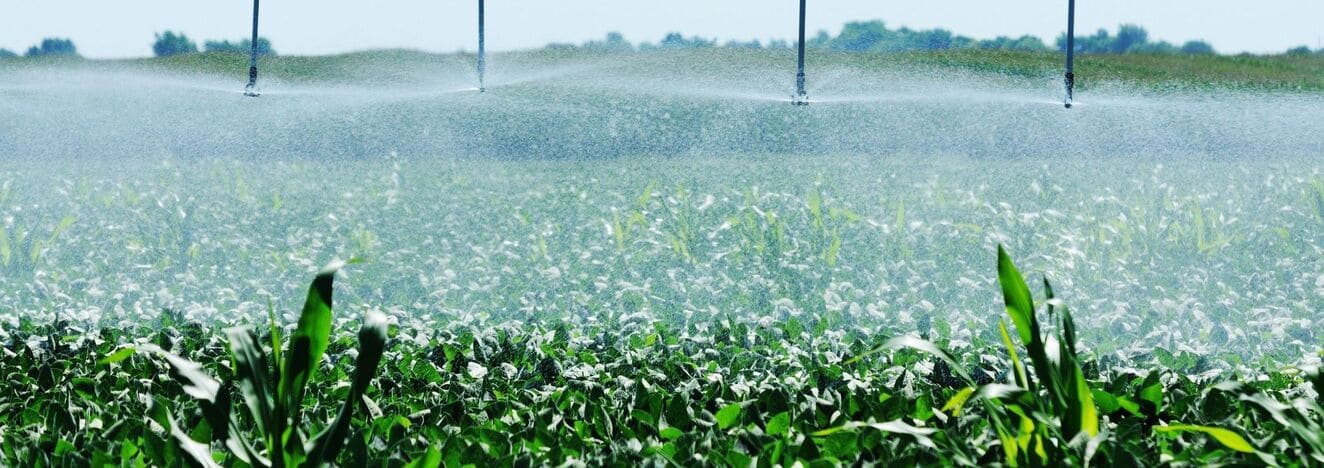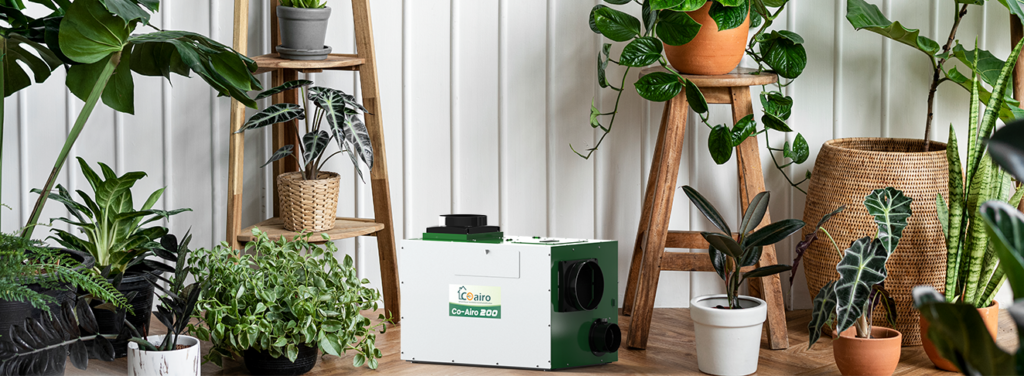
Can a Greenhouse Be Too Humid?
Yes, absolutely — a greenhouse can become too humid.
Humidity in a greenhouse comes mainly from water released by plants and evaporating soil moisture. During warm days, this vapor builds up inside the enclosed space, and without steady airflow, the humidity can reach excessive levels. Such damp conditions often lead to fungal outbreaks, hinder nutrient absorption, and cause pollination difficulties — issues that can quietly stunt plant growth if not managed properly.
What Is the Ideal Humidity for a Greenhouse?
Humidity plays a big part in how well plants grow. It affects how they take in water and nutrients, how fast they develop, and even how easily they catch diseases. While the perfect level can vary depending on the crop and its stage of growth, most greenhouse plants do best in a moderate range. In general, keeping the humidity between 50% and 70% helps plants stay healthy and balanced — not too dry, not too damp.
At different stages of growth, plants have slightly different humidity needs. Seedlings like it more humid because they’re delicate and still developing roots. As plants mature, they prefer a bit drier air to encourage strong growth and reduce disease risk. Here’s a simple guide:
Growth Stage | Ideal Humidity (%) | Why It Matters |
Seedling Stage | 70–80% | Keeps young plants moist and supports root growth |
Vegetative Stage | 60–70% | Balances water loss and nutrient uptake for steady growth |
Flowering/Fruiting Stage | 50–60% | Reduces mold risk and improves flower or fruit quality |
For growers who want more accuracy, it helps to look beyond simple humidity numbers and focus on Vapor Pressure Deficit (VPD). VPD measures how “dry” the air feels to the plant — the gap between how much moisture the air holds and how much it could hold. It’s a more scientific way to track the balance between temperature and humidity, and it gives a clearer idea of whether your plants are comfortable.
Bottom line: Keep your greenhouse humidity around 50–70% for most crops. It’s the sweet spot for healthy growth and fewer problems down the line.
Risks of a High-Humidity Greenhouse
When the humidity in a greenhouse is too high, plants’ growth and health face multiple risks.
Mold and fungal diseases (gray mold, powdery mildew)
First, mold and fungal diseases are major issues in high-humidity greenhouses. Excess humidity provides an ideal environment for fungal spores, especially when the air circulation is poor and moisture accumulates for long periods. Diseases like gray mold (Botrytis) and powdery mildew often emerge when humidity exceeds 85%. Gray mold is particularly common in crops like tomatoes and strawberries, leading to the rotting of flowers, fruits, and tender stems, and in severe cases, it can spread throughout the entire plant. Powdery mildew forms a white fungal layer on the leaves, obstructing photosynthesis and reducing the growth potential of crops. Therefore, excessive humidity directly affects plant health, reducing yield and quality.
Poor pollination and fruit set
In addition to diseases, high humidity also affects pollination and fruit set. In overly humid environments, pollen absorbs water and clumps together, making it difficult to disperse properly, which leads to reduced pollination efficiency and directly affects the quality and quantity of fruits. For example, during the flowering period of tomatoes and peppers, if greenhouse humidity exceeds 70%, the activity of pollen decreases significantly, and the flowers fail to pollinate properly, resulting in hollow or misshapen fruits. Furthermore, high humidity also affects the activity of pollinating insects like bees, further reducing fruit set.
Slow plant growth and nutrient uptake issues
High humidity also hinders normal plant growth, causing slower growth and nutrient uptake issues. Excessive humidity leads to a low Vapor Pressure Deficit (VPD), meaning the surrounding air is too humid, causing the stomata to close and slowing down transpiration. This restricts the upward movement of water and nutrients, particularly calcium, boron, and other microelements, which depend on the transpiration flow for transport. High humidity leads to deficiencies of these elements, manifesting as blossom end rot in tomatoes, leaf tip burn in lettuce, and other physiological disorders. Moreover, in a humid environment, root vitality decreases, making it difficult for the roots to absorb water and nutrients, affecting the overall health and growth rate of plants.
Condensation on walls and structural damage
More seriously, condensation on walls and structural damage are also common consequences of high humidity. When humidity is too high, water vapor in the air condenses on cooler walls and structural components, leading to corrosion of metals, mold growth on wooden structures, and moisture absorption in insulation materials. For instance, metal pipes in the greenhouse may rust due to continuous moisture exposure, while wood and insulation boards can degrade, reducing their lifespan. Additionally, condensation droplets falling on plant leaves not only increase the chance of pathogen transmission but can also damage the plants and impede growth.
Therefore, to ensure a healthy growing environment in the greenhouse, humidity must be strictly controlled. Generally, maintaining the humidity in the greenhouse between 50% and 70% is the optimal range for most crops. This ensures that plants have enough moisture to grow while preventing the risks of excess humidity.
Why is the Humidity Inside a Greenhouse Higher Than Outside?
The humidity inside a greenhouse is higher than outside for several reasons. First, plants release moisture into the air through transpiration. In a greenhouse, with its many plants, this moisture builds up. Outside, wind helps disperse the moisture, but in the greenhouse, the air holds it in.
Second, irrigation adds to the humidity. Whether from sprinklers, drip systems, or watering by hand, the water evaporates from the soil and plants into the air. The warmth inside the greenhouse makes the evaporation more intense, and since the space is enclosed, the moisture has nowhere to go.
The structure of the greenhouse traps heat, which causes more water to evaporate. Without enough airflow, the moisture stays in the air instead of escaping. Without ventilation, the humidity rises quickly, much higher than it would be outside.
Finally, the difference in temperature between day and night leads to condensation. During the day, the sun heats the air, causing more water to evaporate. At night, the air cools, and the moisture in the air condenses on surfaces like windows and walls, adding even more moisture to the air. This, too, increases the humidity.

Should I Put a Dehumidifier in My Greenhouse?
A dehumidifier can be a helpful tool for controlling humidity in a greenhouse, but it’s not always necessary. In certain conditions, when humidity becomes a problem, a dehumidifier can make a real difference in maintaining a healthy environment for your plants.
If humidity is too high at night, especially when temperatures drop, moisture can accumulate inside the greenhouse. In such cases, a dehumidifier can help regulate humidity levels overnight, preventing excessive moisture buildup.
In regions with a rainy season or naturally high external humidity, it can be difficult to manage the internal climate of a greenhouse. The moisture from the outside air can seep into the space, raising the humidity levels. A COAIRO greenhouse dehumidifier helps control this, ensuring that the internal conditions remain ideal for plant growth.
Closed greenhouses are another scenario where dehumidifiers are useful. When a greenhouse is fully sealed, it’s harder for moisture to escape, especially in cooler months when opening vents could lead to unwanted temperature drops. A dehumidifier can help maintain the right level of humidity without compromising temperature stability.
Finally, if you’re growing high-value crops like orchids, tomatoes, or peppers, where precise humidity control is essential, a dehumidifier can be invaluable. These crops are particularly sensitive to changes in moisture levels, and excess humidity can lead to poor pollination, disease, and lower yields.
Do Fans Lower Humidity in a Greenhouse?
Fans help manage humidity in a greenhouse, but they can’t replace proper ventilation or dehumidifiers.
Fans don’t directly remove moisture from the air, but they help move it around. In a greenhouse, humidity doesn’t spread evenly. Without air circulation, moisture builds up in pockets, especially around plants. Fans fix this by pushing the air, helping it flow and mixing the moisture, so it doesn’t concentrate in one spot.
They have indirect benefits too. Fans reduce condensation on leaves, keeping them dry and healthy. They also speed up evaporation. The more the air moves, the faster water evaporates from the soil and plants. Lastly, fans help ventilation systems by keeping the air flowing. Exhaust fans can push out the moist air, but only if the air is circulating well enough to reach them.
How to Tell If Your Greenhouse is Too Humid (One-Sentence Rule)
If you see condensation on the walls, leaves stay wet for hours, gray mold appears, pollination fails, or your RH stays above 80% for more than a few hours, your greenhouse is too humid and needs action.

Maintain Balanced Airflow with Coairo Grow Room Dehumidifiers
Even with good ventilation, humidity can build up in greenhouses, especially on hot or rainy days. Coairo Grow Room Dehumidifiers work alongside your ventilation system to keep air fresh and humidity stable.
They remove excess moisture that fans can’t handle, preventing mold, root rot and pest problems. Designed for continuous performance, these dehumidifiers maintain ideal conditions for photosynthesis and steady plant growth.
Whether it’s summer or winter, balanced humidity keeps plants stronger and yields higher. Visit Coairo.com to explore professional grade dehumidifiers made for modern growers.



